Xeriscape Landscape Plants & Flowers
For The Arizona Desert Environment.
Pictures, Photos, Images, Descriptions, & Reviews.
Cape Aloe, Aloe ferox.
We Are Proud Of Our SafeSurf Rating!
Click On Any Of The Following Links By Amazon.Com
For Books, & Videos About Wildflowers Of Arizona & The Southwest USA. No Obligation!
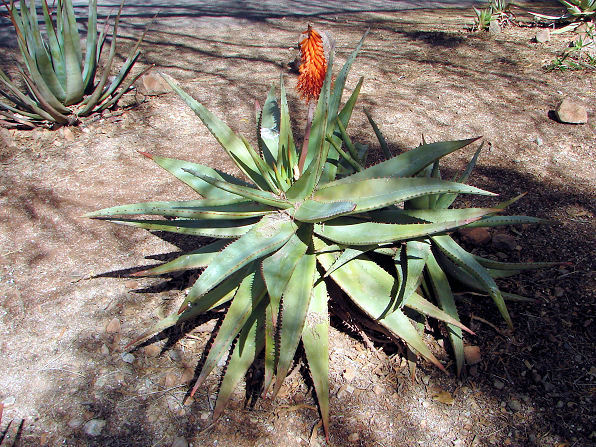 |
| Cape Aloe, Aloe ferox; At The Phoenix Zoo, Arizona. February 8, 2008. |
|---|
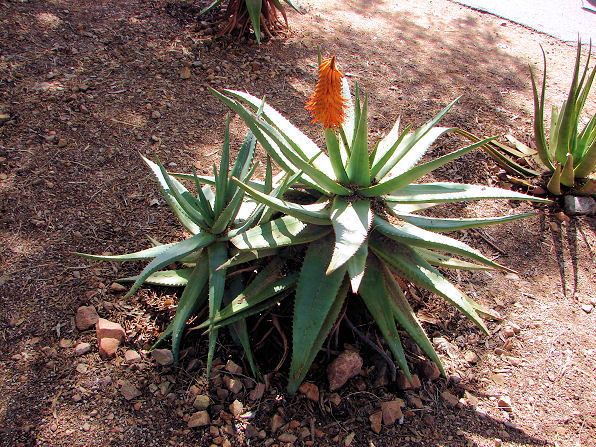 |
| Cape Aloe, Aloe ferox; At The Phoenix Zoo, Arizona. February 8, 2008. |
|---|
| Cape Aloe, Aloe ferox; At Mayo Clinic Hospital, Arizona. February 14, 2008. |
|---|
 |
| Cape Aloe, Aloe ferox; Over 15 Foot Tall. Boyce Thompson Arboretum. About 2,646 Feet Elevation. October 11, 2006. |
|---|
 |  |
| Cape Aloe. Aloe ferox Flowers. | Cape Aloe. Aloe ferox Flower. |
|---|---|
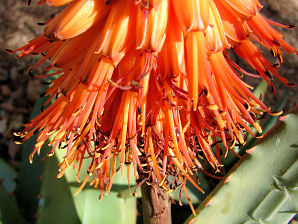 | |
| Cape Aloe. Aloe ferox Flowers. | Cape Aloe. Aloe ferox Flower. |
 | 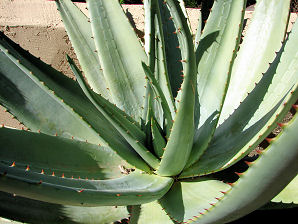 |
| Cape Aloe. Aloe ferox. | Cape Aloe. Aloe ferox. |
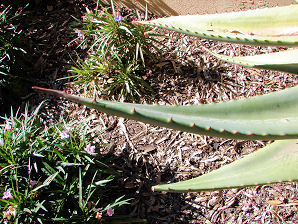 | 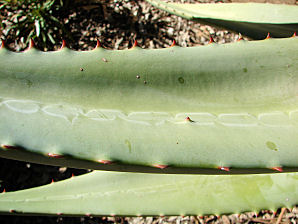 |
| Cape Aloe. Aloe ferox Thorns. | Cape Aloe. Aloe ferox Thorn. |
 /
/

Cape Aloe.
We wish to thank Wikipedia, the free encyclopedia for some of the information on this page. We share images and information with Wikipedia. Aloe ferox, also known as Cape Aloe, Bitter Aloe, Red Aloe, and Tap Aloe, is a species of aloe indigenous to South Africa's Western Cape, Eastern Cape, Free State, KwaZulu-Natal, and Lesotho. Cape Aloe normally will reach about 12 feet in height on an upright unbranched woody stem and it is crowned with a dense rosette of 50 - 60 three foot long thick, fleshy leaves creating approximately a 6 foot spread. The leaves have sharp reddish brown spines on the margins and smaller spines on their top and bottom surfaces. They are dull green, sometimes slightly blue, usually with a reddish tinge. Spines may also be present on the upper and lower surfaces of the leaves. The old leaves will remain after they have dried, forming a "skirt" on the stem. These may be trimmed to create a "tree trunk" appearance. The flowers are carried in a large candelabra - like flower - head. They have between five and eight branches, each carrying a spike-like head of many flowers. Flower color varies from yellow - orange to a bright red. Flowering occurs between January - March. Cape Aloe forms a beautiful display and it attracts many birds. Insects also visit the flowers which in turn brings yet more birds to your garden. Attracts hummingbirds. It is very pool friendly.
Quick Notes:
Height: Height to about 12 feet. Spreading to about 6 feet.
Flowers: Orange to a bright red tubular inch long flowers on a flower stalk with 5 to 10 branches held 2 - 4 feet above the leaves. On an inflorescence that is branched into 3 to 8 racemes, the racemes sre 8 inches to 16 inches in length. Flowers are 1 inch - 1 1/4 inch in length, tubular in shape and slightly upturned at the mouth.
Flowering Time: Phoenix Arizona, January - March.
Stems: Stem, with densely leaved rosette.
Fruit: The fruit is a triangular capsule containing numerous seeds.
Leaves: Smooth dull - green in color, with a reddish tinge and sharp reddish brown spines on the margins and with smaller spines on their top and bottom surfaces.
Found: Native to southern Africa, the Cape Verde Islands, Madagascar, and the Arabian Peninsula. Indigenous to South Africa's Western Cape, Eastern Cape, Free State, KwaZulu-Natal, and Lesotho.
Hardiness: Said to be hardy to 24�F.
Soil pH requirements:
Sun Exposure:
Elevation: 0 - 3,200 feet.
Habitat: Sandy or gravelly, well-drained soil, dry rocky places and in scrub. Takes full sun. Best with some shade. A Xeriscape Landscape plant.
Miscellaneous: Maintenance: Low.Photos Taken At Boyce Thompson Arboretum, October 11, 2006. Phoenix, Arizona Zoo, February 8, 2008.
|



We Are Proud Of Our SafeSurf Rating!
Click On Any Of The Following Links By Amazon.Com
For Books, & Videos About Xerioscape Plants Of Arizona & The Southwest USA. No Obligation!
Back To Arizona Xeriscape Landscaping Main Page.
Back To Xeriscape Succulents Page Four.
Back To Arizona Wild Flowers Home Page.
Back To DeLange Home Page
© 1966 - Present, Audrey, Eve, & George DeLange
| © 1966 - Present, Audrey, Eve, & George DeLange |


